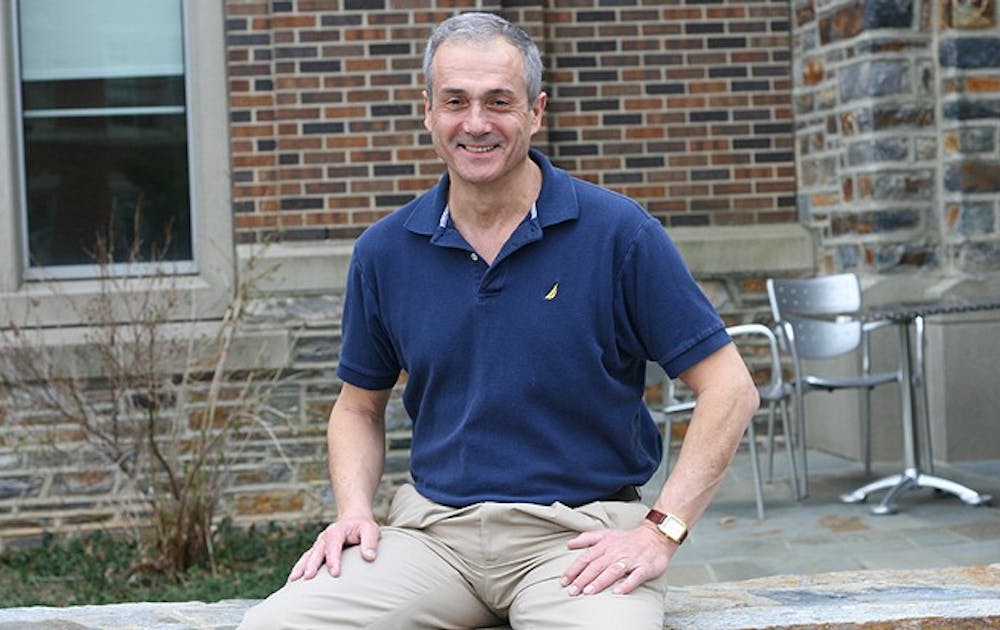A Duke professor has devised a model of global climate change simple enough for even a college freshman to work out by hand.
Adrian Bejan, J.A. Jones professor of engineering, said his model of climate change is the simplest that has been designed and can be worked out through mathematical equations on the back of an envelope, as opposed to more typical and complicated methods—such as modeling with supercomputers. The new model is more accessible to the average person and could help reduce public controversy about the accuracy of climate change models.
The International Journal of Global Warming published Bejan’s paper, which is the collaborative work of several international engineers and scientists, last week.
“People do not really see what went in [to the computer] and what really happened inside the black box [of the computer],” Bejan said. “Our first contribution is to demystify all this by reducing what is really a humongous field of research to no more than two measurements or properties.”
Those two properties are two methods through which energy flows into and out of Earth. The first taken into account is Earth’s reflectivity, or albedo. Albedo is what provides the “whiteness” of Earth when viewed from outer space. The second component involves greenhouse gases.
Amilcare Porporato, researches and publishes on climate change as a professor at the Pratt School of Engineering and the Nicholas School of the Environment. He said in an email Saturday that calculating climate involves many factors.
“In many complex systems, like climate, the exact details of cloud and rainfall formation, turbulence and hydrological flows are not exactly known or cannot be computed with desired precision,” he said.
But just knowing the values of albedo and greenhouse gas factors at any given time, Bejan said, allows for simple predictions to be made regarding how the climate will respond.
The new global warming model is accessible to a typical undergraduate physics major. Following a few weeks of explanation, it could indeed be derived by a college student in advanced physics using just a paper and pencil, Pratt Dean Thomas Katsouleas said.
“With pen and paper, you can come up with ballpark models that fit the more complicated models and historical data used by climate scientists, and work these things out from first principles,” Katsouleas said.
For that reason, he predicts the model could be used by students or by climate scientists as a complement to supercomputers. There are limitations in the data from the model that mean it will not replace more traditional and comprehensive research models, Katsouleas noted, but it could serve as a useful way for scientists to check their own work. The model may well appear in textbooks one day, he added.
Porporato compared the data that can be gained from Bejan’s climate insights to what a researcher could learn about a student’s performance on an exam. In Porporato’s analogy, by using Bejan’s simpler method, a researcher could calculate whether a student will pass or fail. To predict whether the student receives an A or a C on the exam, however, more detailed models would need to be used.
While developing the model, the researchers went back and compared the results of the change in climate predicted by their model with the results from more traditional models using supercomputers. The results were similar, a check Katsouleas said is important in scientific research.
Bejan is among the top 100 most-cited engineers because of a first principle of physics he invented called the constructal law. The law states that design in nature is based on systems evolving to flow more efficiently over time.
Scientists have used the constructal law to predict all sorts of things, Bejan said. The principle can apply to elements of nature, as well as systems built by humans, such as bureaucracy or university rankings.
“Climate change is just the most recent,” he noted.
Professor of the practice of sociology Gilbert Merkx worked with Bejan on a book applying the constructal law to social dynamics. He said he is not surprised that the constructal law can be applied to climate change modeling.
“It’s a wonderful insight that allows one to make sense in a very straightforward way of things that seem extremely complicated when you look into them,” he said.
Get The Chronicle straight to your inbox
Signup for our weekly newsletter. Cancel at any time.

